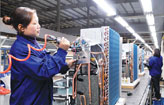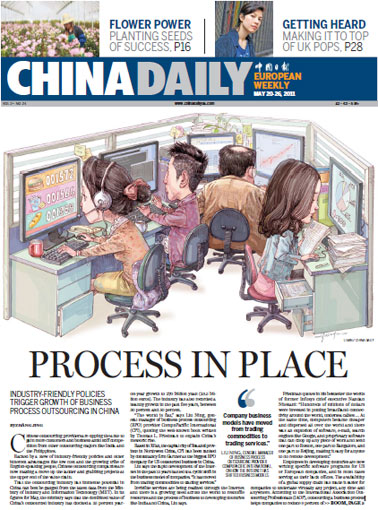Op-Ed Contributors
Preparing for effects of population trends
Updated: 2011-05-26 07:59
By Peng Wensheng (China Daily)
The census results show that China's urban population had reached 666 million, or 49.68 percent of the total population, and reveal that China still has a long way to go to reach standards of both developed countries and other emerging market economies.
Also, the income disparity between city and rural workers continues to grow. The figures indicate that there is considerable capacity for improvement, and further urbanization. But conversely in comparison to capacity, the urbanization rate will slow in the near future, thus decreasing its contribution to economic growth.
The influence of the labor shortage in recent years is a good indicator, as is the growth in labor quality due to better education. The census shows that the illiteracy rate fell from 6.72 percent in 2000 to 4.08 percent by 2010 and the number of people with university standard education increased from 3,611 people in every 100,000 to 8,930.
Better educated workers mean that, with a consistent labor supply, there should be productivity growth. It also means an adjustment to the economic structure from the labor-intensive, sustained growth pattern of the past 30 or so years. During the adjustment period, however, the labor market may suffer from imbalances caused by mismatching of skills to necessary and/or available tasks.
All in all, the reduction in the number of working age people - expected to fall sharply in absolute number in the next two to three years - will result in a remarkable slowdown in China's economic growth in the next 10 years. Redundant rural labor released from urbanization and the growth of labor quality will partly, though not completely, offset the effect of the reduced total working age population.
According to our estimates for China's economy, potential yearly growth over the 12th Five-Year Plan (2011-2015) period will be between 8 percent and 9 percent taking into account labor trends, capital and productivity, and it is expected to slip still further during the 13th Five-Year Plan (2016-2020).
The author is the chief economist for China International Capital Corporation Limited.
(China Daily 05/26/2011 page8)
E-paper

Thawing out
After a deep freeze in sales during the recession, China’s air conditioner makers are bouncing back
Cool Iron lady
Of good and evil
Build on security initiatives
Specials

Memory lanes
Shanghai’s historic ALLEYS not just unique architecture but a way of life

Great expectations
Hong Kong-born singer songwriter rises to the top of the UK pops.

A diplomat of character
Belgian envoy draws on personal fascination to help build China ties.
